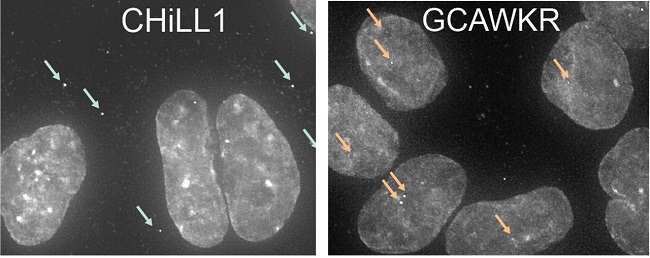Researchers use gene editing technology to discover new therapeutics for lung cancer
An international team of scientists have demonstrated for the first time that CRISPR genome-editing technology can be used as a tool to find new gene therapies for lung cancer.
The team led by Associate Professor Rory Johnson, UCD School of Biology and Environmental Science and Fellow, UCD Conway Institute published the study findings in the current issue of the scientific journal, Cell Genomics.
Lung cancer is the leading cause of cancer mortality. The work set out to create new routes to developing non-small cell lung cancer therapies based on RNA therapeutics (RNATX). RNATX have recently emerged as promising new strategy for developing therapies against common diseases.
RNA is part of the genetic information in all living cells. While DNA contains the blueprint instructions, RNA is capable of both transmitting that information and independently performing important biological roles in the cell.
Scientists are particularly interested in “long noncoding RNAs” (lncRNAs), a large yet enigmatic class of RNAs discovered in the past decade that have emerged as critical disease genes. This study focused on discovering lncRNA targets in non-small cell lung cancer.
Commenting on the research, Associate Professor Rory Johnson said, “RNATX offers a way to target virtually any disease gene, safely and effectively, while speeding up and economising the drug development process.
The biggest hurdle is identifying the optimal gene targets for RNATX in a given disease. This project achieves that by combining CRISPR genome-editing with lncRNAs to select the most promising lncRNA targets for therapy.”
 Newly-discovered long noncoding RNA molecules in lung cancer cells.
Newly-discovered long noncoding RNA molecules in lung cancer cells.
CRISPR genome-editing is a powerful tool that gives scientists a cheap and easy way to find and alter a specific piece of DNA within a cell - the ‘cut and paste’ of the biological world.
Using the CRISPR tool, the team initially identified 80 possible lncRNA targets that are active in NSCLC. Further screening homed in on two potential drug targets that have been named as Cancer Hallmarks in Lung LncRNA (CHiLL) 1 and GCAWKR. These targets will now be further investigated.
Lung cancer is a critical unmet medical need. It is the greatest cancer killer in Ireland and worldwide. Present therapies fail to effectively treat most patients, leading to a poor 5-year survival that has improved little over past decades.
Commenting on the publication, Professor Helen Roche, Director, UCD Conway Institute said, “These findings offer a widely applicable strategy to discover new targets for RNATX in virtually any cancer. I want to congratulate Rory and his colleagues worldwide on this work.”
The team plan to further develop the candidate gene targets for preclinical testing with a view to moving into clinical trials if successful. They will also look to further improve screening techniques to discover better targets, more rapidly and cheaply, and in other cancer types.
The study was initiated by Johnson group while located at the University of Bern, and completed in University College Dublin, funded by a Science Foundation Ireland (SFI) Future Research Leaders grant to Associate Professor Rory Johnson. The collaborative study also included scientists from research institutions in Spain, Switzerland, Italy, U.S.A., Hong Kong, and China.
The findings are published online.
Multi-hallmark long noncoding RNA maps reveal non-small cell lung cancer vulnerabilities. Esposito et al., 2022, Cell Genomics 2, 100171 September 14, 2022. https://doi.org/10.1016/j.xgen.2022.100171
Social Media Links